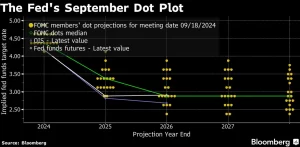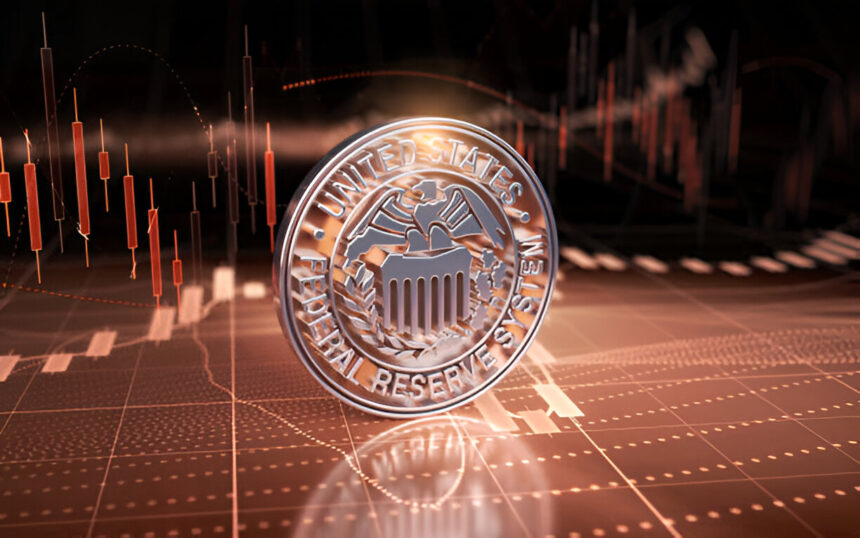The markets are reacting strongly to the Federal Reserve’s decision on September 17, 2025, to lower the federal funds rate by 25 basis points (bps) to a target range of 4.00% to 4.25%. This is the first time this has happened since late 2024, and it shows that the government is moving from a tightening to an easing stance. This change is a delicate balancing act: the Fed is seeking to protect a weakening job market without starting inflation again, which is still a big worry. The recent move and Chair Jerome Powell’s subsequent comments provide us with a plan for the next few months, but this plan may encounter several potential issues. It’s important for everyone in the market, from institutional traders to individual investors, to grasp the details of this decision. This isn’t just a shift in policy; it’s a sign of where the economy is going and a reason to look at your market positions again.
Why Did the Fed Cut Rates in September 2025?
Lowering rates was a preemptive attack, exemplifying a classic case of “risk management”. The Fed is taking steps to deal with evidence of a slowing economy, especially a sluggish job market. With unemployment rising to 4.3% and recent job reports indicating minimal advances, the risk of an economic slump began to exceed the risk of high inflation that lasts a long time. The move lowers the cost of capital to encourage businesses to invest and people to spend money, which will help keep the economy from getting worse.
The dot plot and the Summary of Economic Projections (SEP) show an obvious but careful path. The median prediction says that there will be two further 25 basis point cuts by the end of 2025, probably at the October and December meetings. This will bring the fed funds rate down to 3.50%–3.75%. This is a big change from the June predictions, which said there would be fewer cuts. This change shows a more dovish median position, but the disagreement within the group is still a big issue.
The Divided FOMC:
The median dot plot makes it look like the Federal Open Market Committee (FOMC) is in agreement, but a deeper inspection shows that there are substantial disputes. Nine of the participants think there could be three or more cuts this year, while six think a more cautious approach, or no cuts, is better. This difference is the main point of contention in monetary policy right now. It shows how challenging it is to predict the future of a complicated economy, where inflation and unemployment are often at odds.
What effect does the FOMC division have on markets?
The FOMC’s split makes the market less certain. Traders and investors have to look at every piece of data that comes in, from jobs reports to inflation numbers, to guess which side’s opinion will win. When data surprises, whether it’s good or bad, it can cause big changes in the market as people change the odds of future cuts or holds. This can cause volatility, where even a small shift of tone from a Fed member can create swings in the markets. Under the circumstances, the best thing is to stay flexible and not make moves that are too aggressive or one-sided based on a single projection.

How the Rate Cut Affects Important Markets.
What It Means for the US Dollar (USD).
Historically, rate cuts have made the US dollar weaker because dollar-denominated assets become less appealing to international investors. Initially the market reacted by lower ticks in the dollar index, as traders took into account the reduced interest rates. With two further cuts expected in 2025, the dollar might lose more value, possibly by 2% to 5% against key currencies. However, seasoned traders understand that the market doesn’t consistently move in a linear fashion. The dollar went up for a short time when Chair Powell said that there was a “long road” to 2% inflation. This was a hawkish comment that initiated a warning to investors that this easing cycle might be cautious and careful. The dollar’s future will depend on the Fed, global growth, and what path central banks choose.
What It Means for the US Stock Indices.
Effect on stock indexes Lower rates help stocks do better. They lower the cost of borrowing for businesses and make it easier for investors to pay for their positions. Cutting interest rates also reduces the discount rate used to determine the present value of future earnings, making equities more appealing. The S&P 500 and Nasdaq started out with some ups and downs, but they ended up with a positive bias, with futures pointing up. Analysts think the S&P 500 could reach the 6,700–6,800 level before the end of the year, which would be a “relief rally”. The Russell 2000, which tracks small-cap stocks, is one of the biggest winners. These smaller businesses frequently rely more on debt to grow, so they would benefit greatly from lower capital costs.
What It Means for the Gold.
Effect on Gold Gold’s response was a classic case of “buy the rumour, sell the news.” When traders heard about the cut, the precious metal shot up to a record high of $3,707/oz, but then it immediately fell back as they saw that the move was already priced in. The long-term outlook for gold is favourable. Gold becomes a more appealing asset when interest rates are on the lower side and the currency is losing value. It protects against inflation and currency fluctuations, which are both vital in today’s economy. If the dollar keeps going down, the path towards another easing cycle might push gold prices up to $4,000/oz by mid-2026.

What’s Next?
The Fed’s decision in September 2025 is only the beginning, not the conclusion. A lot of data will affect the future of monetary policy. We are currently in a time when every economic report, from the PCE inflation report on September 27 to the jobs data that will come out soon, will be closely watched for signs of what the Fed will do next. If inflation stays higher for longer than projected, the Fed’s easing cycle could be shorter than the markets think it would be. This would cause a “hawkish pause”. On the other hand, if the job situation gets worse quickly, the Fed might speed up its cuts.
You need to be disciplined in this market, not a guess. The “easy money” phase has ended, and we’ve moved on to a more mature part of the cycle. My advice, which I’ve learnt over decades of watching these cycles happen, is to stick to the basics. For investors, this means picking companies with robust balance sheets and profit growth that will last, instead of just going with the flow of the market. For traders, this means being very careful with risk and seeing volatility as an opportunity instead of a threat. The path ahead may be rocky, but for those who know what the Fed is saying, there are also a lot of chances.
Disclaimer: This blog is for informational purposes only and does not constitute financial advice. Always conduct your own research and consult a professional advisor before making investment decisions.







